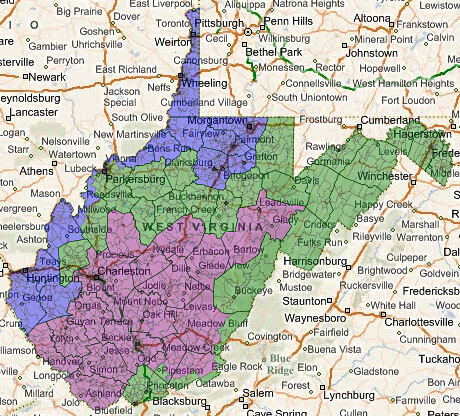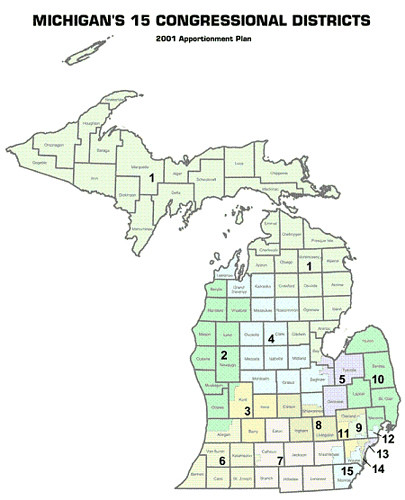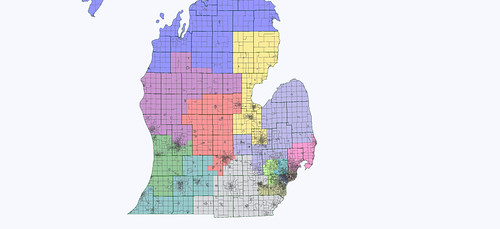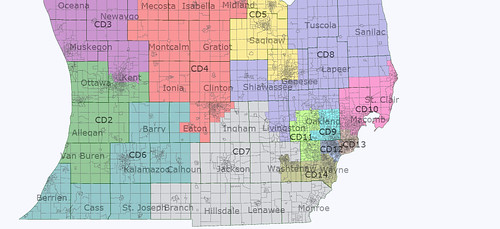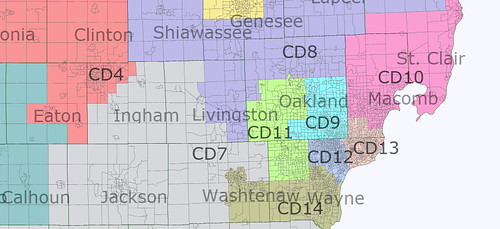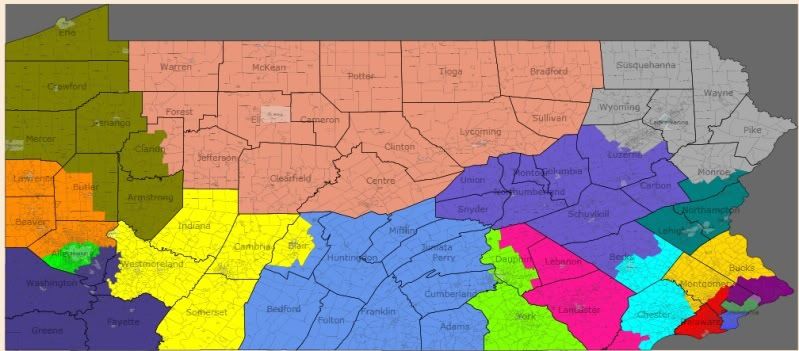• IN-Sen: Richard Lugar and local leaders in the tea party movement had a sitdown at an Indianapolis hotel last month. I’m not sure if it was actually intended by Lugar to try to deter a GOP primary challenge, but it seemed to have none of the desired effect if so; the net result seemed to have been cordial but with a sense of “game on,” with the main question left being who the challenger will be.
• WI-Sen: With this his first day out of the Senate, Russ Feingold will be, instead of heading for the K Street gravy train, taking a position at Marquette University’s law school. When asked about his 2012 plans in the event of a Herb Kohl retirement, Feingold simply said that he hopes Kohl runs again and would support him if so.
• IN-Gov: Democrat Jonathan Weinzapfel looks poised to become the first entrant in the Indiana gubernatorial race. He’s announced that he won’t seek another term as mayor of Evansville (which would require running for re-election this year), and says that he’ll take a “good, hard look at” the governor’s race and make a decision sooner rather than later.” Meanwhile, after the Beltway collectively decided yesterday that Mike Pence was going to run for Gov. on the GOP side, there’s yet more conflicting evidence today, as seen in his plans to appear with other GOP presidential hopefuls at a conference in Georgia, just across the border from pivotal South Carolina.
• MA-Gov: Deval Patrick is vowing today that he’ll serve out his full second term (something that a Massachusetts governor hasn’t done in decades, not since Mike Dukakis), but won’t seek a third term in 2014. That would seem to (at least for now) put the kibosh on any speculation that he might look to challenge Scott Brown in 2012.
• MN-06: The news that produced spit-takes all across America this morning: Michele Bachmann is floating her name for president in 2012. Obviously a failed vanity presidential bid is no deterrent to a return engagement in the House if you hit the ejector seat early enough (just ask still-Rep. Ron Paul), but this bit of laughable presidential weirdness could have some major downballot implications if it truly leads to an open seat (especially if Tarryl Clark is indeed looking to run again).
• WI-07: It looks like we might already have a serious contender in the on-deck circle in the 7th, which at D+3 is one of the bluest districts that the GOP picked up thanks to David Obey’s retirement. Former state Sen. Kevin Shibilski was one of the short-list of candidates to run in Obey’s stead (state Sen. Julie Lassa eventually became the consensus pick), and is now saying he’s seriously interested in a 2012 run. Shibilski owns two resorts and apparently has serious self-funding capacity. Shibilski still sounds a little wary, though, preferring to wait and see whether new Rep. Sean Duffy stays a boilerplate Republican or turns into the sort of moderate who’s been able, in the past, to hold down a rural Wisconsin seat (a la Steve Gunderson, or Mel Laird, if you want to go way back to Obey’s predecessor). (H/t alphaaqua.)
• IA-St. Sen.: The year’s barely started and the Dems have already lost their first special election! I don’t think anybody had particularly high hopes for last night’s fight, though: it was a GOP-leaning seat in Iowa’s rural southwestern corner, held to replace Kim Reynolds, who just became Iowa’s Lt. Governor. Montgomery County auditor Joni Ernst held the seat for the GOP, beating Dem nominee Ruth Smith, with 67% of the vote. The Dems still control the state Senate 26-23, with one more formerly-GOP-held special election pending.
• NV-St. Sen.: This is big news by Nevada standards: state Sen. Bill Raggio, the state GOP senate leader for decades but deposed recently from his perch in a tea party-ish palace coup (in the wake of his endorsement of Harry Reid), has announced that he’s resigning later this month rather than completing his term. This may have Sharron Angle’s antennae twitching, as you might remember she tried and failed to primary out Raggio in his Reno-area seat in 2008, and she might be interested in trying that again, adding the state Sen. to the list of her myriad other possibilities like another NV-Sen run or an NV-02 run if Dean Heller vacates (although it’s worth noting this won’t lead to a fast special election, as Nevada, like several other western states, fills legislative vacancies temporarily via appointment).
• NY-St. Sen.: This seems like strange posturing that will probably vaporize once the Democrats are back in the majority in the state Senate, but four of New York’s Senate Democrats just broke off from the Dem caucus and formed their own little club, the Independent Democrat Caucus (meaning the breakdown is either 32-30 or 32-26-4, depending on how you want to view it). Interestingly, it’s not the usual most-uncooperative Dems (Ruben Diaz, anyone?), but a clutch of reform-minded Dems (led by the barely-re-elected David Valesky, and also including the newly-elected David Carlucci) who apparently didn’t want to get boxed into voting for John Sampson as Dem leader.
• PA-St. Sen.: The special election to replace long-time Democratic state Sen. Michael O’Pake in the light-blue SD-11 has been set for March 15. As I’ve mentioned before, this could turn into an interesting bellwether on where Pennsylvania’s southeastern suburbs are headed.
• Votes: Today’s attention-getting vote was the number of defections against Nancy Pelosi in the Speaker vote: 19 Democrats voted for someone else (or present). Heath Shuler led the way with 11, while other votes included Steny Hoyer, John Lewis, and even neighbors Dennis Cardoza and Jim Costa voting for each other.
• Redistricting: Two news stories concern the independent commissions that will be in charge of redistricting in two states gaining seats, Arizona and Washington. In Arizona, they’re already litigating the issue of who even gets on the commission in the first place; new state Sen. president and all-around jackass Russell Pearce is suing on the basis that three of the people nominated to serve are technically ineligible. (Interestingly, two of the three are Republicans, although maybe the problem is they weren’t hardliners enough for Pearce’s tastes.) Meanwhile, in Washington, Skeletor has re-emerged from a decade of suspended animation: evil genius and ex-Sen. Slade Gorton will be one of the two designated Republicans on the commission. Luckily, the lead Dem going up against Gorton will be Tim Ceis, the former Seattle deputy mayor who’s well-known for his own elbow-throwing abilities.
Finally, the Fix has its latest installment in its state-by-state redistricting look, and I agree with both their conclusions about Ohio: that, mostly because of geography, Betty Sutton is the likeliest Dem to get squeezed rather than Dennis Kucinich (since she faces pressure from other Dems from the north, west, and east), and that, because of depopulation in the state’s Appalachian southeast and the fact that they’re both obscure freshmen, Bob Gibbs and Bill Johnson are the GOPers likeliest to get pitted against each other for the state’s other lost seat.
















